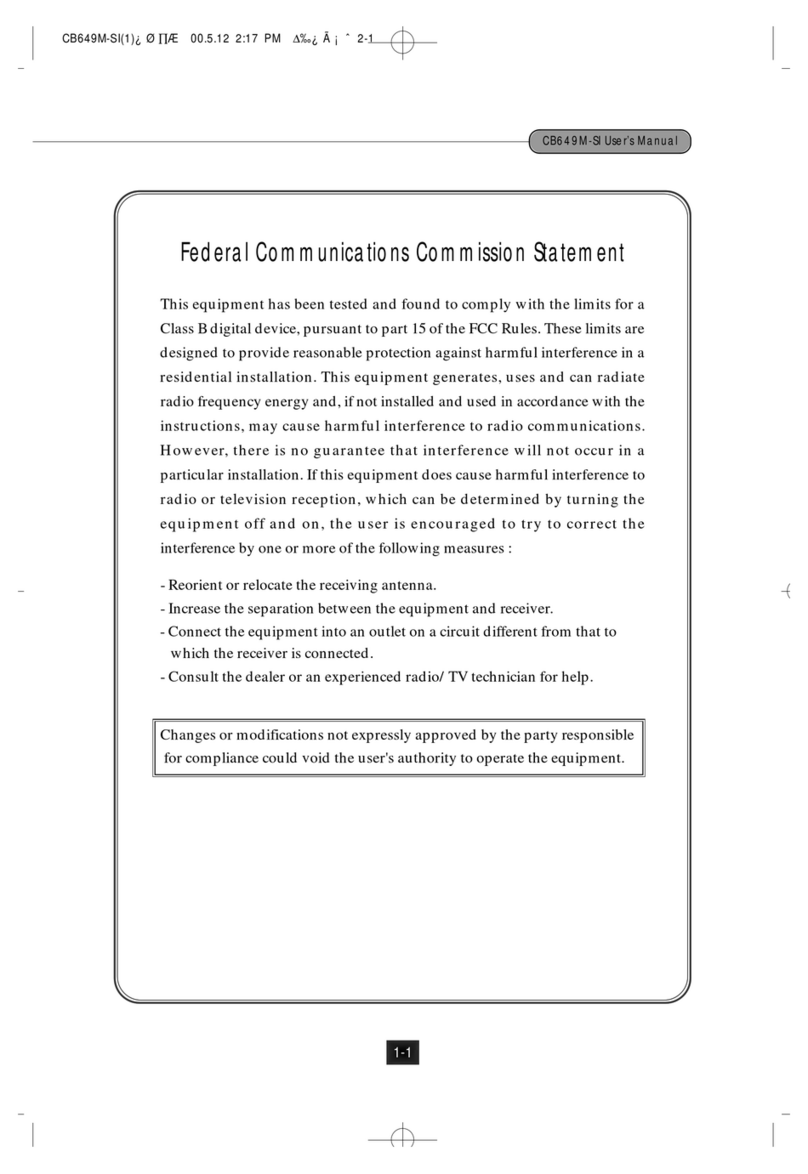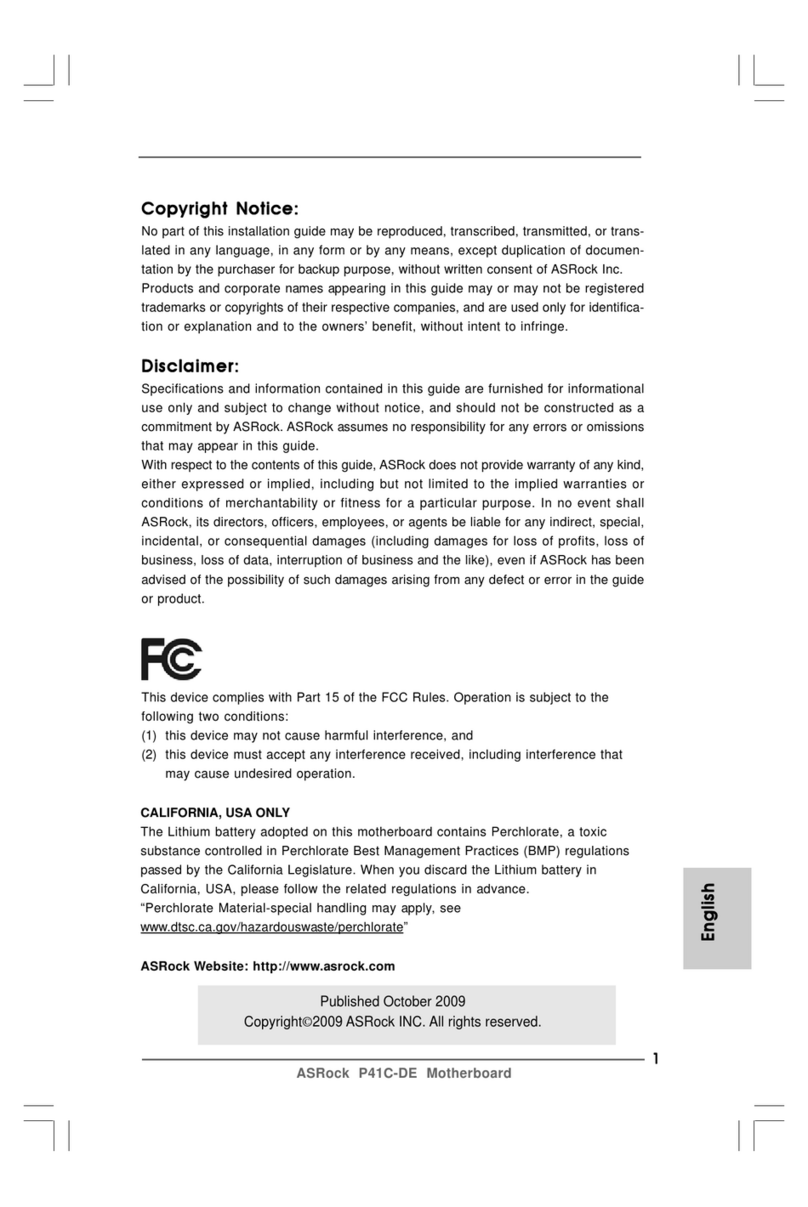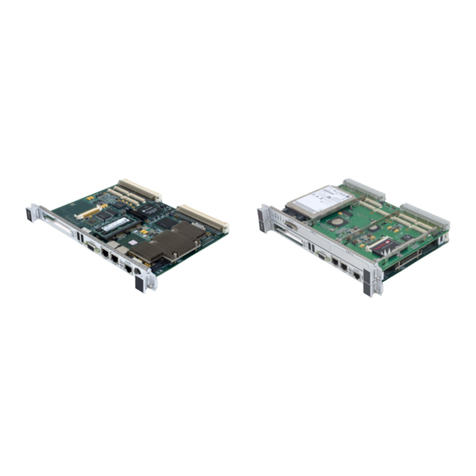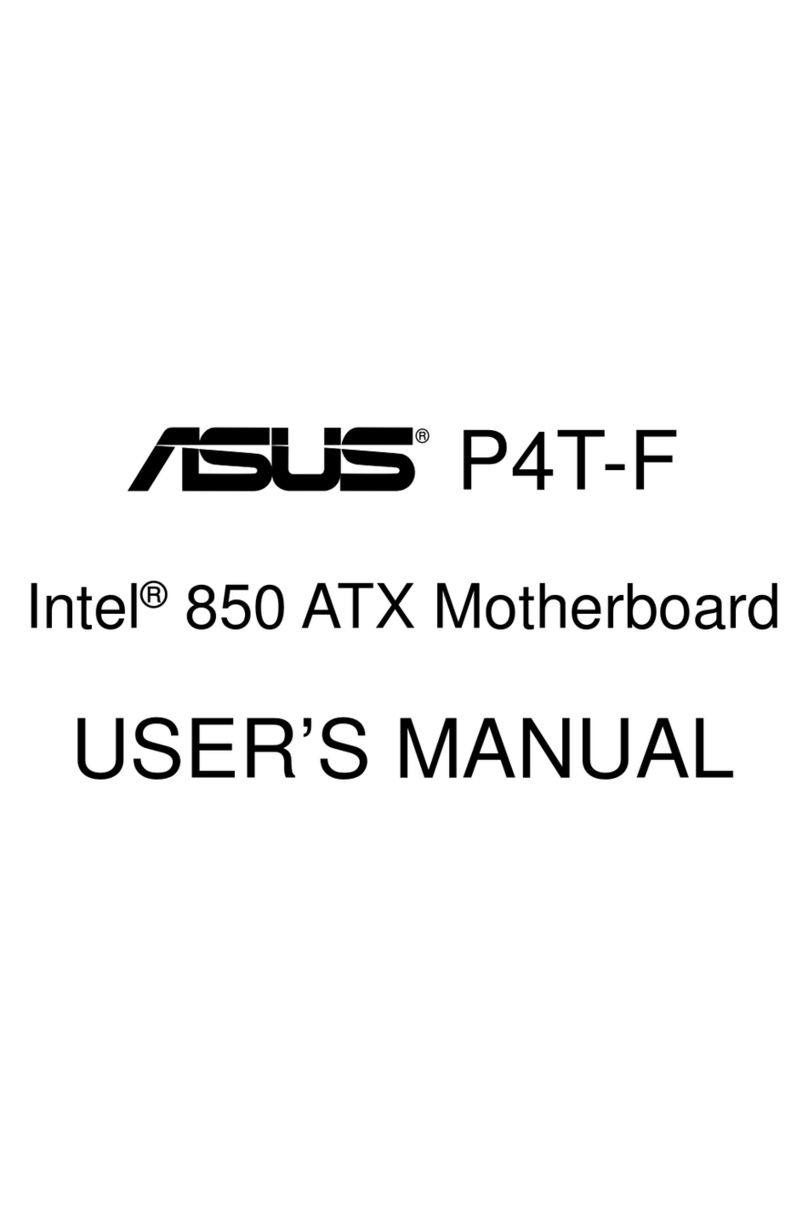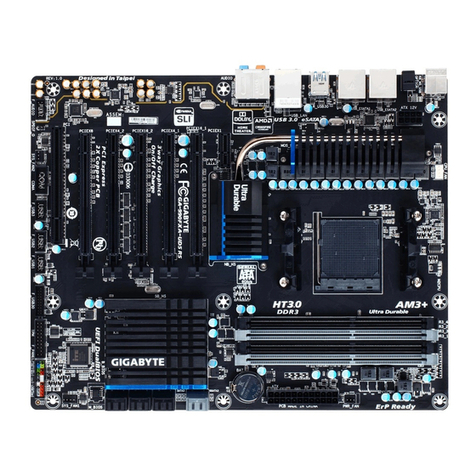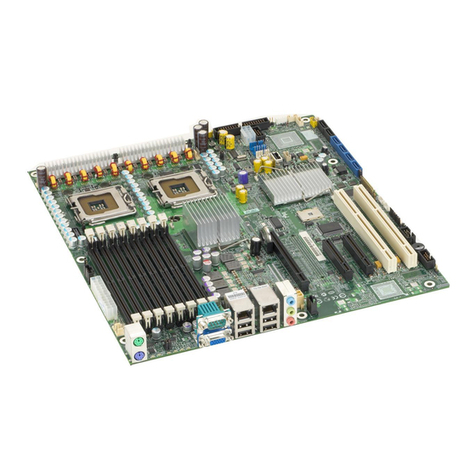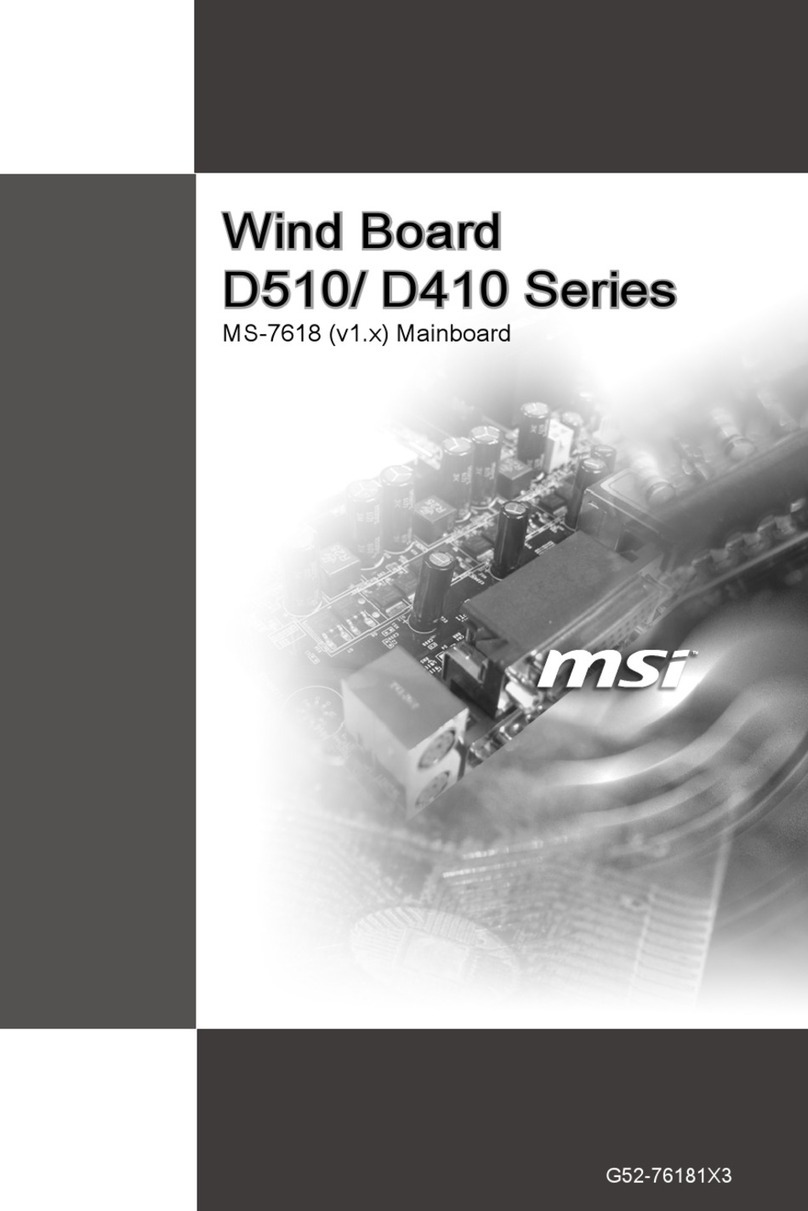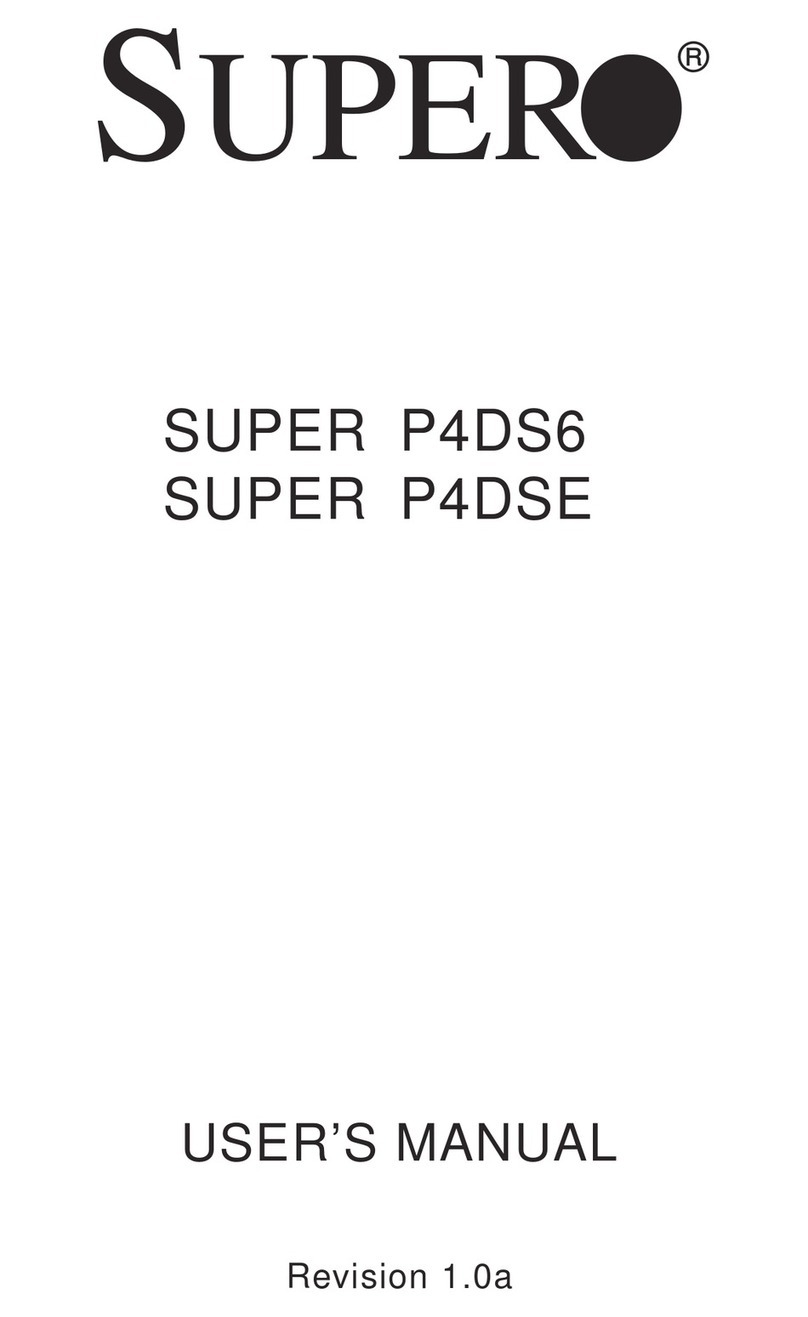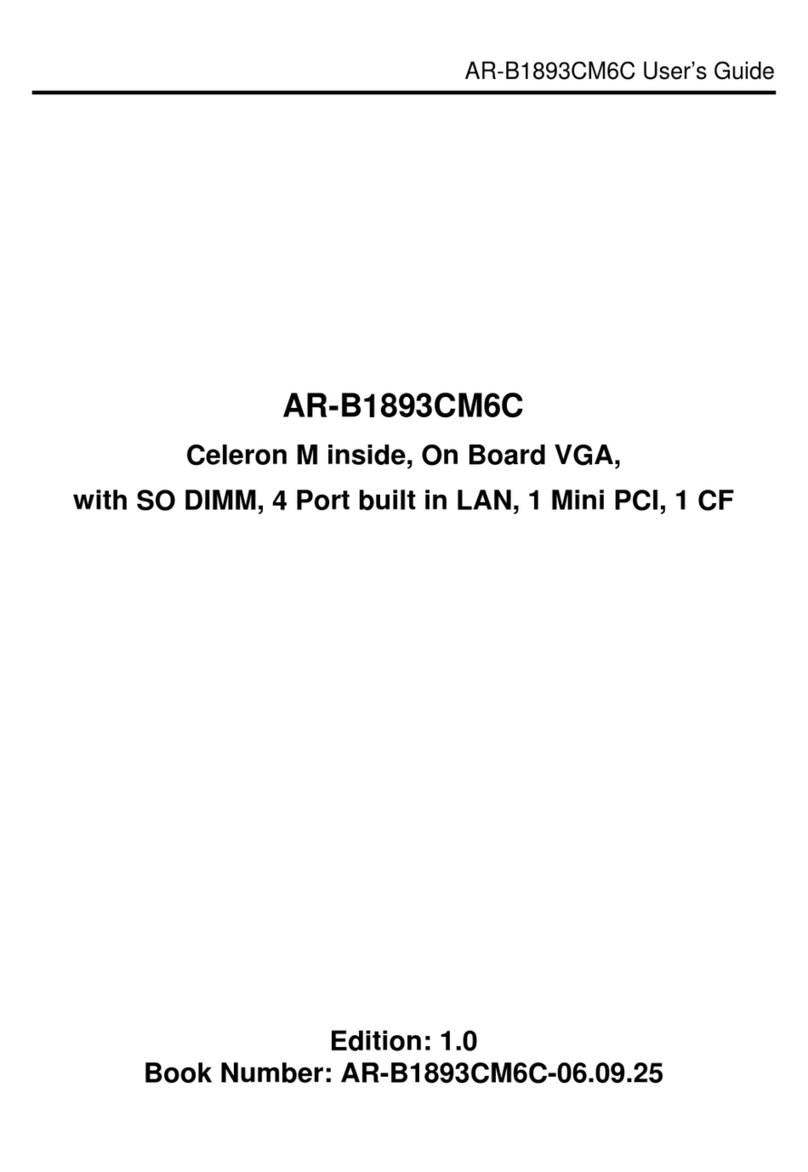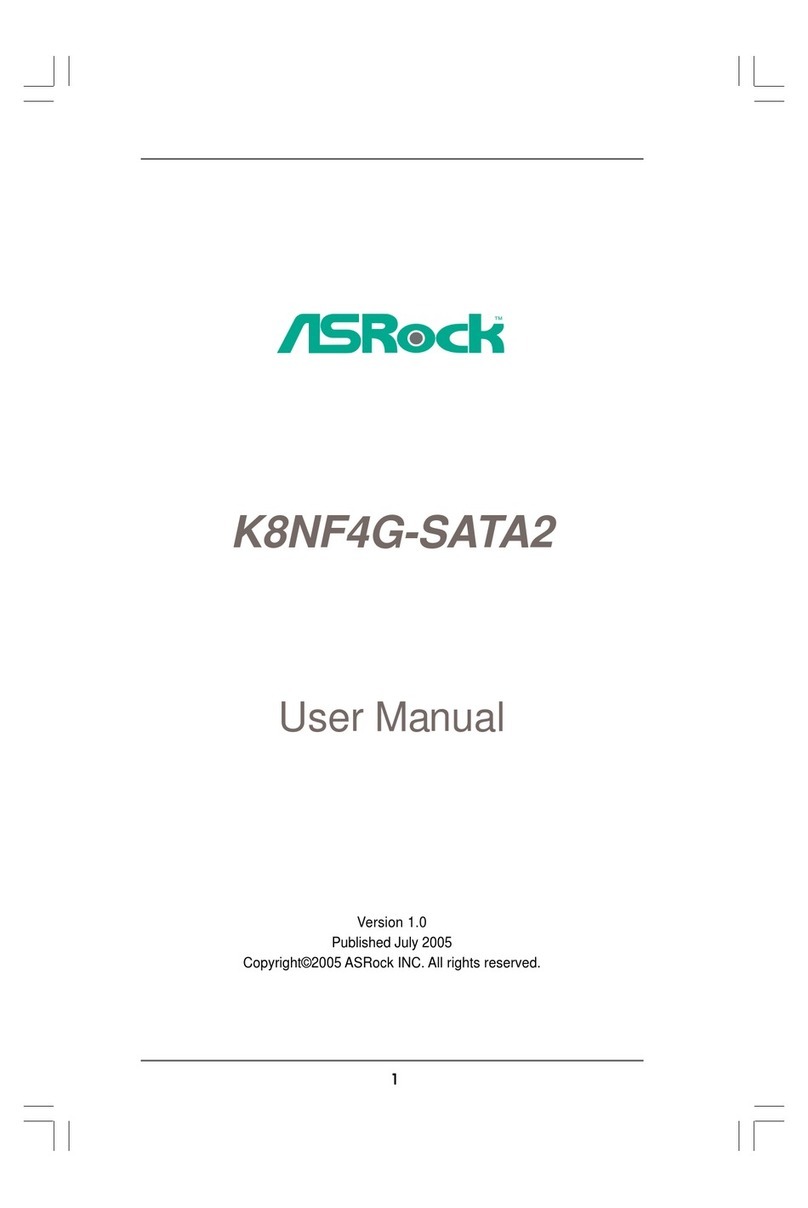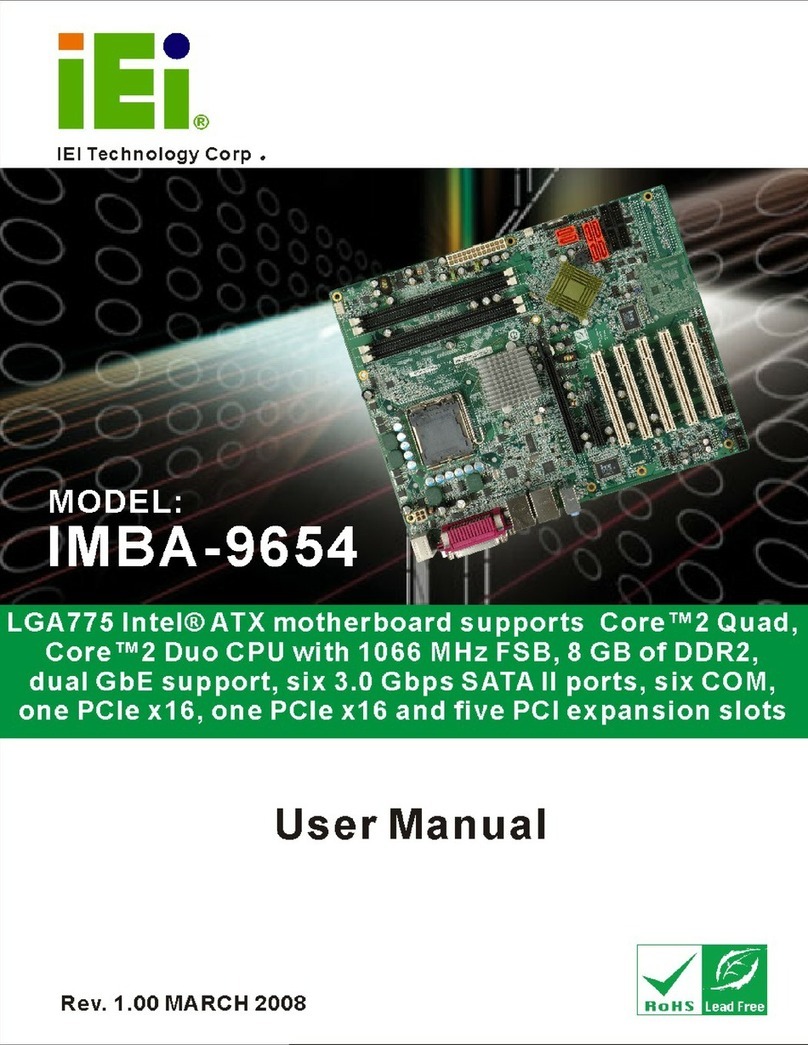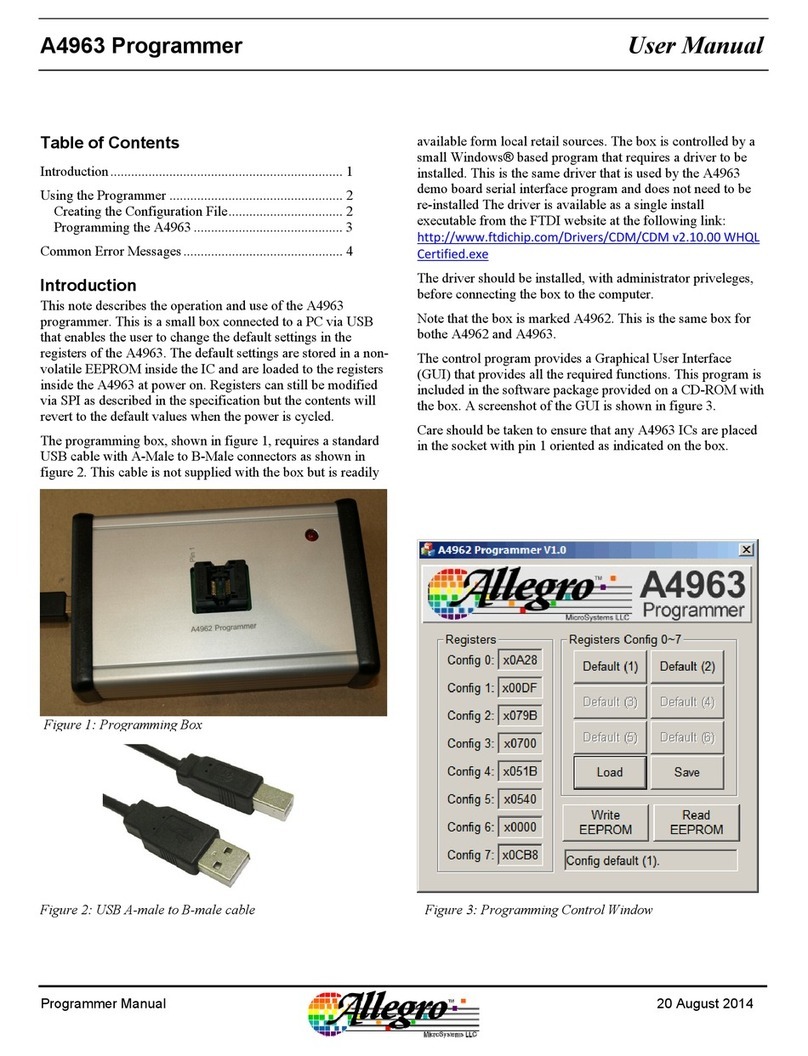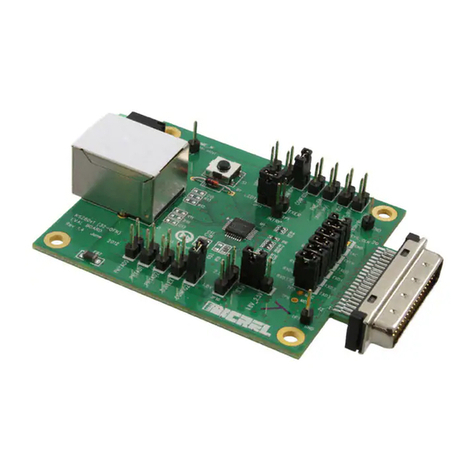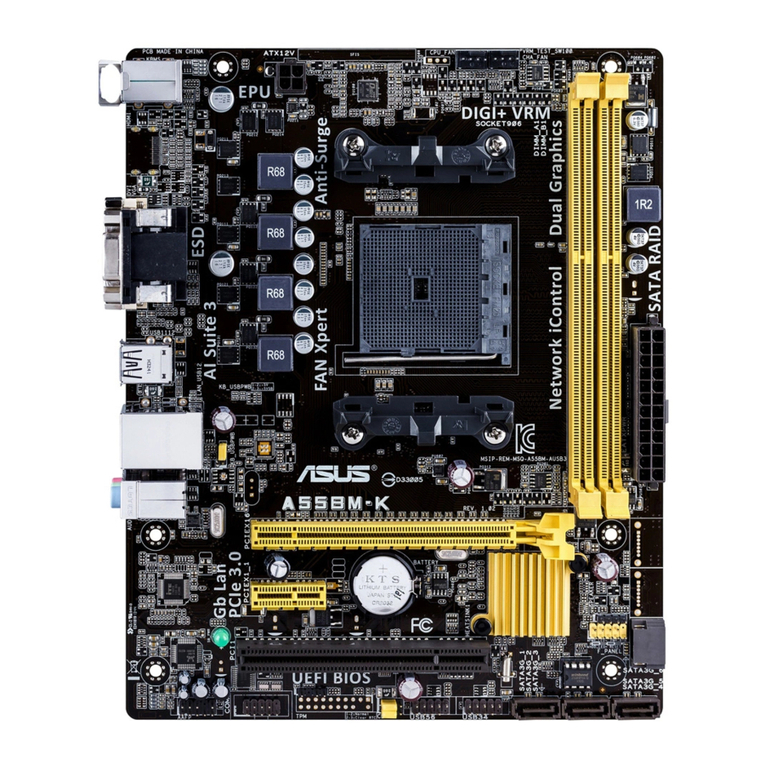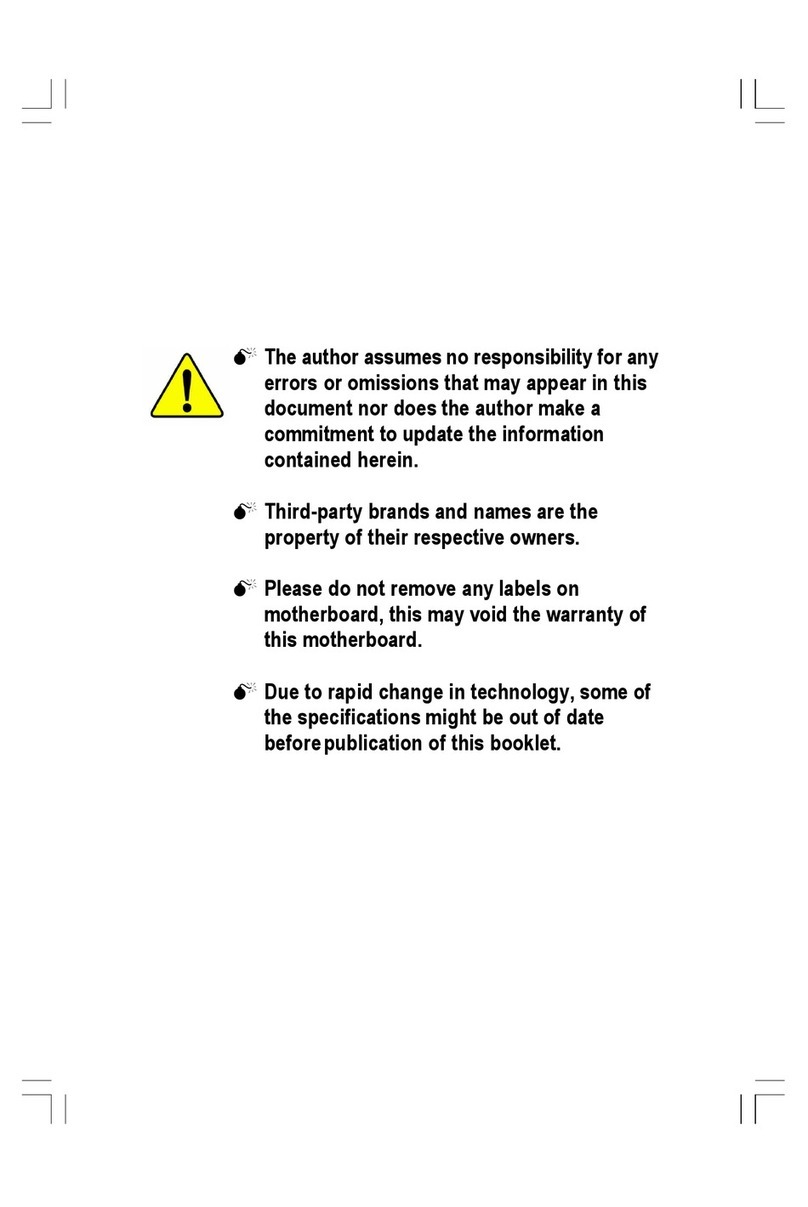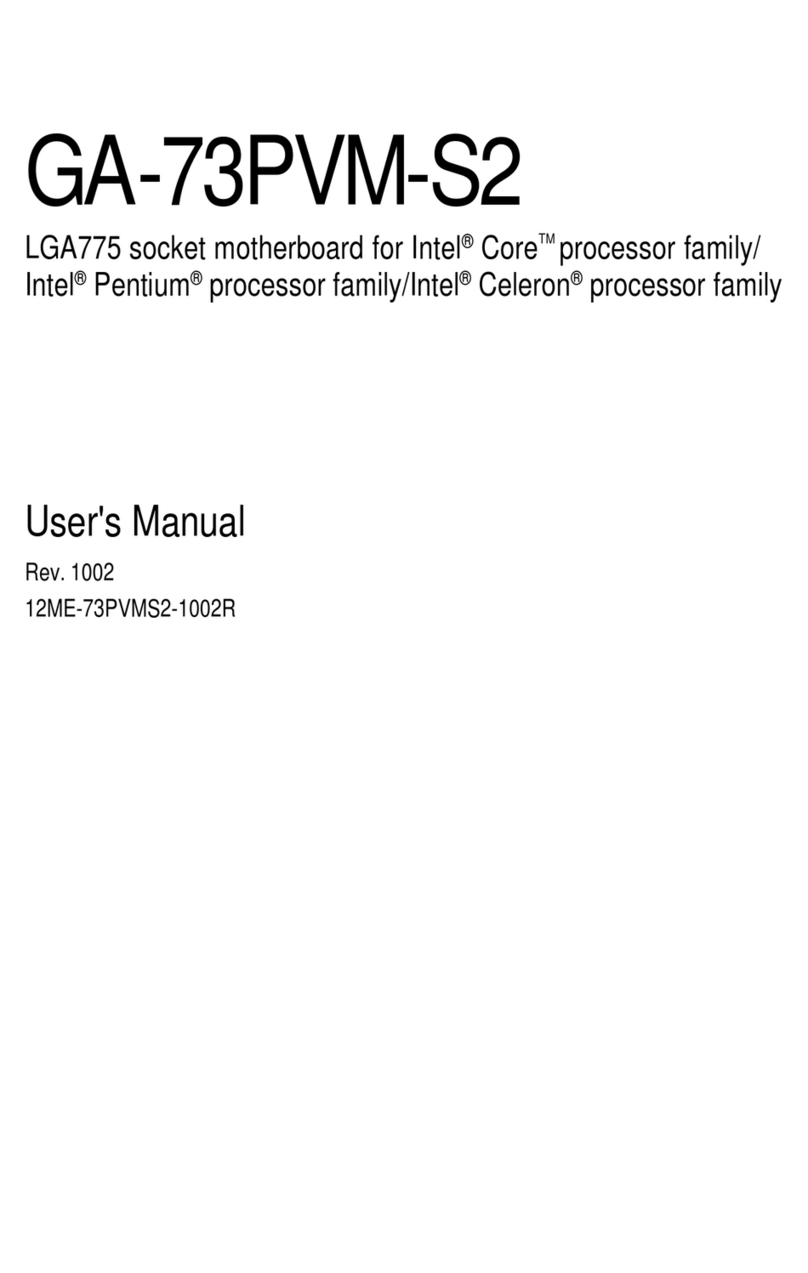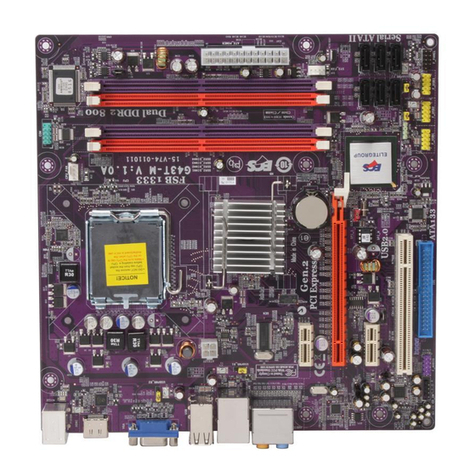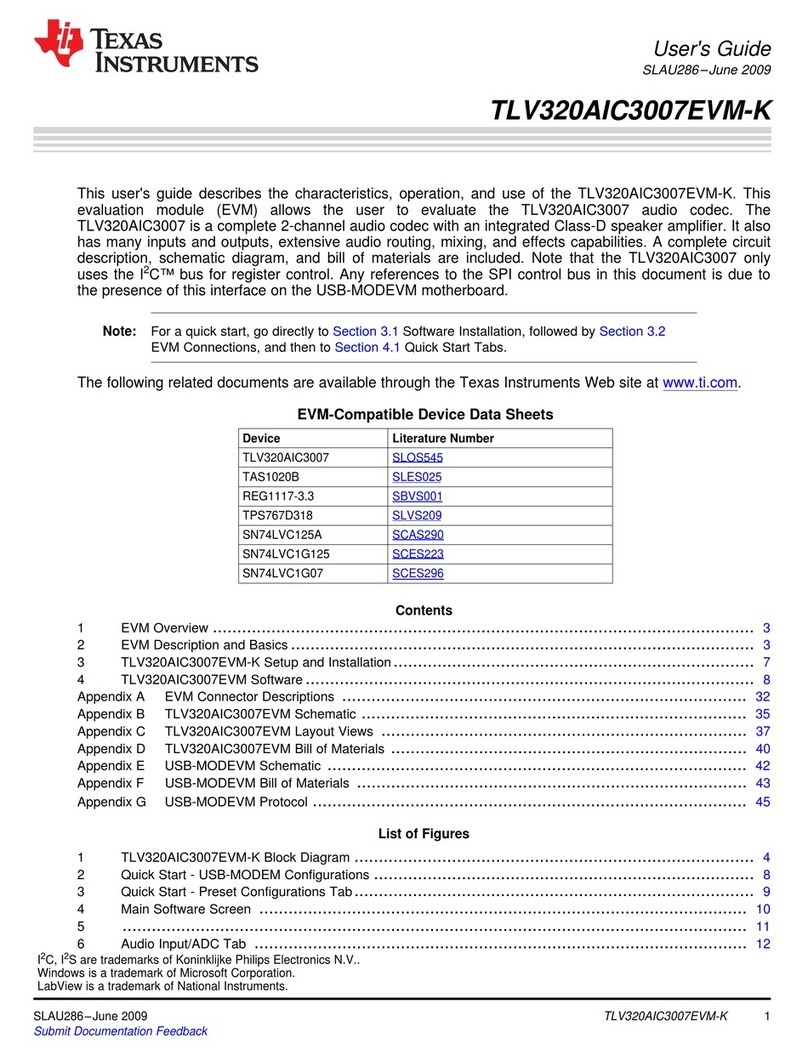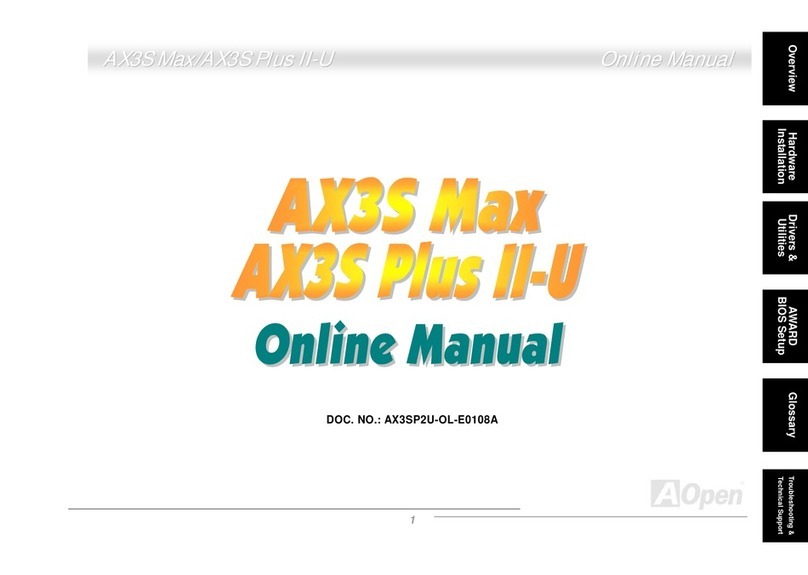Daewoo CB650M-BX User manual

Federal Communications Commission Statement
This equipment has been tested and found to comply with the limits for a
Class B digital device, pursuant to part 15 of the FCC Rules. These limits are
designed to provide reasonable protection against harmful interference in a
residential installation. This equipment generates, uses and can radiate radio
frequency energy and, if not installed and used in accordance with the
instructions, may cause harmful interference to radio communications.
However, there is no guarantee that interference will not occur in a particular
installation. If this equipment does cause harmful interference to radio or
television reception, which can be determined by turning the equipment off
and on, the user is encouraged to try to correct the interference by one or more
of the following measures :
- Reorient or relocate the receiving antenna.
- Increase the separation between the equipment and receiver.
- Connect the equipment into an outlet on a circuit different from that to which
the receiver is connected.
- Consult the dealer or an experienced radio/TV technician for help.
Changes or modifications not expressly approved by the party responsible
for compliance could void the user's authority to operate the equipment.
CB650M-BX Mother Board
1
CB650M-BX(1,2¿Â) 00.5.12 2:8 PM ∆‰¿Ã¡ˆ1

CB650M-BX Mother Board
2
1. Introduction
Overview••••••••••••••••••••••••••••••••••••••••••••••1-1
Main Features ••••••••••••••••••••••••••••••••••••••••••1-2
Motherboard Layout ••••••••••••••••••••••••••••••••••••• 1-8
2. Installation
Check List••••••••••••••••••••••••••••••••••••••••••••• 2-1
Installation Steps •••••••••••••••••••••••••••••••••••••••• 2-1
Set Jumpers•••••••••••••••••••••••••••••••••••••••••••• 2-2
1. Processor Core:BUS Frequency Multiple •••••••••••••••• 2-2
2. Clear CMOS RAM •••••••••••••••••••••••••••••••• 2-2
3. Disable Onboard Audio •••••••••••••••••••••••••••• 2-3
Installing the System Memory••••••••••••••••••••••••••••••• 2-4
1. General DIMM Notes•••••••••••••••••••••••••••••• 2-4
2. Memory Configuration••••••••••••••••••••••••••••• 2-4
3. Installing and Removing DIMMs•••••••••••••••••••••• 2-5
Installing the Processor ••••••••••••••••••••••••••••••••••• 2-5
Installing the Pentium II/III processor•••••••••••••••••••••• 2-6
1. Installing the URM•••••••••••••••••••••••••••••••• 2-6
2. Installing a Processor •••••••••••••••••••••••••••••• 2-7
Processor Installation Overview •••••••••••••••••••••• 2-8
3. Installing a Processor(Boxed version)••••••••••••••••••• 2-9
Installing Cables ••••••••••••••••••••••••••••••••••••••• 2-10
1. Processor Fan connector ••••••••••••••••••••••••••• 2-10
2. Primary/Secondary IDE connector ••••••••••••••••••• 2-10
3. FDD connector•••••••••••••••••••••••••••••••••• 2-10
4. IR connector•••••••••••••••••••••••••••••••••••• 2-10
5. Wake on LAN connector••••••••••••••••••••••••••• 2-11
6. Internal Modem Ring connector ••••••••••••••••••••• 2-11
7. Front Panel Switch connector ••••••••••••••••••••••• 2-11
8. Secondary Fan connector •••••••••••••••••••••••••• 2-12
Table of Contents
Table of Contents
CB650M-BX(1,2¿Â) 00.5.12 2:8 PM ∆‰¿Ã¡ˆ2

CB650M-BX Mother Board
3
9. Power Switch connector ••••••••••••••••••••••••••• 2-12
10. Micro ATX Power Supply connector•••••••••••••••••• 2-13
11. Telephony(TDA) connector •••••••••••••••••••••••• 2-13
12. Aux-In(Line-In) connector••••••••••••••••••••••••• 2-13
13. CD-ROM(Panasonic) Audio connector •••••••••••••••• 2-14
14. ATAPI Audio connector •••••••••••••••••••••••••• 2-14
External connectors ••••••••••••••••••••••••••••••••••••• 2-14
Installing sound driver ••••••••••••••••••••••••••••••••••• 2-16
3. Built-in BIOS Setup Program
3.1 Starting Setup•••••••••••••••••••••••••••••••••••••••• 3-1
3.2 Standard CMOS Setup ••••••••••••••••••••••••••••••••• 3-5
3.3 BIOS Features Setup ••••••••••••••••••••••••••••••••••• 3-8
3.4 Chipset Features Setup •••••••••••••••••••••••••••••••• 3-12
3.5 Power Management Setup •••••••••••••••••••••••••••••• 3-17
3.6 PNP/PCI Configuration ••••••••••••••••••••••••••••••• 3-22
3.7 Load BIOS Defaults••••••••••••••••••••••••••••••••••• 3-24
3.8 Load Setup Defaults •••••••••••••••••••••••••••••••••• 3-24
3.9 Integrated Peripherals ••••••••••••••••••••••••••••••••• 3-25
3.10 Supervisor Password ••••••••••••••••••••••••••••••••• 3-29
3.11 User Password ••••••••••••••••••••••••••••••••••••• 3-29
3.12 IDE HDD Auto Detection•••••••••••••••••••••••••••••• 3-30
3.13 Quitting SETUP••••••••••••••••••••••••••••••••••••• 3-32
CB650M-BX(1,2¿Â) 00.5.12 2:8 PM ∆‰¿Ã¡ˆ3

1-1
The CB650M-BX motherboard integrates the latest advances in processor,
memory, and I/O technologies into a Micro ATX form factor(244x205mm) that
combines performance, flexibility, and easy of use into high integrated capable
of meeting a variety of price/performance levels.
The CB650M-BX motherboard supports Intel Pentium II/III processor or
Celeron processor based on the Intel 440BX AGPsets(82443BX and 82371EB).
The CB650M-BX motherboard supports not only a 66MHz host but also a
100MHz host bus. So Intel Pentium II/III 350~450MHz processor and
Pentium II/III(Katmai) processor with a 100MHz host bus can be supported
for higher performance level. Two standard 168-pin DIMM Sockets with
memory size up to 256MB support Synchronous DRAM memory.
The Intel 82371EB PCI-to-ISA/IDE Xcelerator(PIIX4E) provides an integrated
Bus Master IDE controller and Ultra DMA/33 with high performance IDE
interfaces for up to four devices.
In addition, the CB650M-BX comes with an AGP(Accelerated Graphics Port)
bus slot, a faster than the current 33MHz PCI bus. The AGP bus provides a
direct connection between graphics subsystem and system memory.
1. Introduction
1. Introduction
Chapter 1.
Overview
CB650M-BX Mother Board
There is the danger of an explosion if the battery is incorrectly replaced.
Replace the battery with the same or equivalent type recommended
by the manufacturer. Discard used batteries according to the battery
manufacturer's instructions.
Caution :
CB650M-BX(1,2¿Â) 00.5.12 2:8 PM ∆‰¿Ã¡ˆ1-1

CB650M-BX Mother Board
1-2
1. Processor :
The CB650M-BX motherboard supports a single Pentium II/III or Celeron
processor. The processor’s VID pins automatically program the voltage
regulator on the motherboard to the required processor voltage. The host bus
speed(66MHz or 100MHz) is automatically selected. The processor connects to
the motherboard through the 242-pin Slot 1 connector. The processor must be
secured by a retention mechanism attached to the motherboard.
2. Chipsets :
The Intel 82440BX AGPset consists of the Intel 82443BX PAC and the Intel
82371EB PIIX4E bridge chip. The PAC provides an optimized DRAM
controller and Accelerated Graphic Port(AGP) interface. The I/O subsystem of
the 82440BX is based on the PIIX4E, which is a highly integrated PCI ISA IDE
Xcelerator Bridge.
2-1. 82443BX PCI/AGP Controller
●Processor interface control
Support for processor host bus frequencies of 100MHz and 66MHz
●Integrated DRAM controller
+3.3V only DIMM DRAM configurations
100MHz or 66MHz SDRAM
●Accelerated Graphics Port interface
Main Features
The CB650M-BX motherboard supports Pentium II/III processor with a 100
or 66MHz host bus and Celeron processor with a 66MHz host bus.
Processor with a 100MHz host bus should be used only with 100MHz
SDRAM;the motherboard will not operate reliably if a processor with a
100MHz host bus is paired with 66MHz SDRAM. However, processors with
a 66MHz host bus can be used with either 66MHz or 100MHz SDRAM.
Caution :
CB650M-BX(1,2¿Â) 00.5.12 2:8 PM ∆‰¿Ã¡ˆ1-2

CB650M-BX Mother Board
1-3
●PCI bus interface
●Data Buffering
●Power management functions
Compliant with ACPI power management
●SMBus support for desktop management functions
●Support for system management mode(SMM)
2-2. 82371EB PCI ISA IDE Xcelerator(PIIX4E)
●Multifunction PCI-to-ISA bridge
●USB controller
Two USB ports
Support for Universal Host Controller Interface(UHCI) design guide
●Integrated Dual-channel enhanced IDE interface
Support for up to four IDE devices
Support for PIO Mode 4 transfer(up to 16MB/s) and Ultra DMA/33
synchronous DMA mode transfer(up to 33MB/s)
●Enhanced DMA controller
Support for PCI DMA with three PC/PCI channels and distributed
DMA protocols
●Interrupt controller based on 82C59
●Power management logic
Support for Wake on Ring and Wake on LAN technology
Support for APM and ACPI
●Real-Time Clock
●16-bit counters/timers based 82C54
3. AGP
The integrated AGP is a high-performance bus for graphics-intensive
applications, such as 3D applications. AGP, while based on the PCI Local Bus
Specification, Rev.2.1, is independent of the PCI bus and is intended for
exclusive use with graphical display devices. AGP overcomes certain
limitations of the PCI bus related to handling large amount of graphics data
with the following features:
CB650M-BX(1,2¿Â) 00.5.12 2:8 PM ∆‰¿Ã¡ˆ1-3

CB650M-BX Mother Board
1-4
●Pipelined memory read and write operations that hide memory access
latency
●Demultiplexing of address and data on the bus for nearly 100% bus efficiency
4. USB
The CB650M-BX motherboard has two USB ports;one USB peripheral can be
connected to each port. The two USB ports are implemented with stacked
back panel I/O connectors. The CB650M-BX motherboard fully supports
UHCI and uses UHCI-compatible software drivers.
The +5V lines to these ports are protected with a PolySwitch circuit that, like a
self-healing fuse, reestablishes the connection after an overcurrent condition is
removed.
●Self-identifying peripherals that can be plugged in while the computer is
running
●Automatic mapping function to driver and configuration
●Support for up to 127 physical devices
5. IDE Support
The CB650M-BX motherboard has two independent bus-mastering IDE
interfaces. These interface support:
●ATAPI devices(such as CD-ROM devices)
●ATA devices using these transfer modes
PIO Mode 3
PIO Mode 4
Ultra DMA/33 synchronous-DMA mode
Computer systems that have an unshielded cable attached to a USB
port may not meet FCC Class B requirements, even if no device or a
low-speed USB device is attached to the cable. Use shielded cable that
meets the requirements for full-speed devices.
NOTE
CB650M-BX(1,2¿Â) 00.5.12 2:8 PM ∆‰¿Ã¡ˆ1-4

CB650M-BX Mother Board
1-5
6. Real-Time Clock, CMOS RAM, and Battery
The real-time clock is compatible with DS1287 and MC146818 components.
The clock provides a time-of-day clock and a multi-century calendar with
alarm features and century rollover. The real-time clock supports 256 bytes of
battery-backed CMOS SRAM in two banks that are reserved for BIOS use.
A coin-cell battery powers the real-time clock and CMOS memory. When the
computer is plugged into a wall socket, the battery has an estimated life of
three years. When the computer is plugged in, the 3.3V standby current from
the power supply extends the life of the battery. The clock is accurate to +13
minutes/year at 25˚C with 3.3V Stand-by voltage applied.
7. I/O Controller
The IT8671F controller from ITE is an ISA Plug and Play-compatible,
multifunctional I/O device that provides following features:
●Two serial ports
●One parallel port with ECP and EPP support
●Interface for one 1.2MB, 1.44MB, and 2.88MB diskette drive
●PS/2 style mouse and keyboard interfaces
The BIOS Setup program provides configuration options for the I/O
controller.
7-1. Serial Ports
The motherboard has two 9-pin D-sub serial connectors located on the back
panel. The serial ports support NS16C550-compatible UARTs and can be
assigned as COM1(3F8), COM2(2F8), COM3(3E8), or COM4(2E8).
7-2. Parallel Ports
The connector for the multimode bidirectional parallel port is a 25-pin D-Sub
connector located on the back panel.
CB650M-BX(1,2¿Â) 00.5.12 2:8 PM ∆‰¿Ã¡ˆ1-5

CB650M-BX Mother Board
1-6
7-3. Diskette Drive Controller
The I/O controller support two diskette drive that is compatible with the
82077 diskette drive controller and support both PC-AT and PS/2 modes.
7-4. Keyboard and Mouse Interface
PS/2 keyboard and mouse connectors are located on the back panel. The +5V
lines to these connectors are protected with a Fuse circuit from an overcurrent
condition.
8. Audio Subsystem
The audio subsystem contains of these devices.
●Yamaha YMF724F or YMF740C
●AKM AK4542 stereo audio codec or compatible part
8-1. Yamaha YMF724F(or YMF740C)
●PCI 2.1 compliant
●PC97/PC98 compliant
●Legacy audio compatibility
●Supports PC/PCI and Distributed DMA for legacy DMAC(8237) emulation
8-2. AKM AK4542 Stereo Audio Codec
●High performance 18-bit stereo full-duplex audio codec with up to 48KHz
sampling rate
●Connects to the Yamaha YMF724F(or YMF740C) using a five-wire digital
interface
9. Hardware Monitor
The hardware monitoring subsystem provides low-cost instrumentation
capabilities. The feature of the hardware monitor subsystem include:
●An integrated ambient temperature sensor
●Fan speed sensors
●Power supply voltage monitoring to detect levels above or below acceptable
values
CB650M-BX(1,2¿Â) 00.5.12 2:8 PM ∆‰¿Ã¡ˆ1-6

CB650M-BX Mother Board
1-7
When suggested ratings for temperature, fan speed, or voltage are exceeded,
an interrupt is activated.
10. Wake on LAN Technology
Wake on LAN technology enables remote wakeup of the computer through a
network. Wake on LAN technology requires a PCI add-in network interface
card(NIC) with remote wakeup capabilities. The remote connector on the NIC
must be connected to the motherboard Wake on LAN connector. The NIC
monitors network traffic at the MII interface;upon detecting a Magic Packet,
the NIC asserts a wakeup signal that powers up the computer.
11. Wake on Ring
Wake on Ring enables the computer to wake from sleep or soft-off mode when
a call is received on a telephony device, such as a faxmodem, configured for
operation on either serial port.
12. Expansion Slots
●One AGP slot
●Two dedicated PCI slots
●One shared ISA/PCI slot
CB650M-BX(1,2¿Â) 00.5.12 2:8 PM ∆‰¿Ã¡ˆ1-7

CB650M-BX Mother Board
1-8
Figure 1. CB650M-BX Motherboard Layout
Motherboard Layout
CB650M-BX(1,2¿Â) 00.5.12 2:8 PM ∆‰¿Ã¡ˆ1-8

CB650M-BX Mother Board
2-1
This Chapter provides information how to install and configure the CB650M-BX
motherboard.
The standard packing of the CB650M-BXshould include :
CB650M-BX motherboard
1 IDE cable
1 Floppy cable
CB650M-BX User's Manual
Device driver CD
Universial Retention Mechanism Kit(URM)
Installing of the CB650M-BX motherboard depends on the type of case you use.
The CB650M-BX motherboard is designed for the micro ATX form factor and
must be installed in an micro ATX chassis.
Before using your computer, you must complete the following steps :
1. Set Jumpers
2. Installing the System Memory
3. Installing the Processor
4. Installing Cables
2. Installation
2. Installation
Chapter 2.
Check List
Installation Steps
CB650M-BX(1,2¿Â) 00.5.12 2:8 PM ∆‰¿Ã¡ˆ2-1

Several hardware settings are made through the use of jumper cap to connect
jumper pins on the motherboard. See motherboard layout on page 1-8 for
location of jumpers. The jumper settings will be described numerically such as
'1-2', '2-3' or 'On(Short)', 'Off(Open)'.
1. Processor Core : BUS Frequency Multiple
To install the processor at its correct frequency, Please refer the following table
to set up processor frequency.
Table 2-1. Pentium II/III or Celeron processor Frequency settings
2. Clear CMOS RAM(JP7)
The CMOS RAM is powered by the onboard coin-cell battery or power supply.
To clear the CMOS Data : (1) Turn off your computer and plugged out your AC
power cord from a wall socket, (2) Close pins 2-3, wait five seconds and place
the jumper back on pins 1-2. (The jumper must be placed back on pins 1-2 for
the system to function properly), (3) Turn on your computer.
CB650M-BX Mother Board
2-2
Set Jumpers
Freq.
266MHz
300MHz
333MHz
366MHz
400MHz
350MHz
400MHz
450MHz
500MHz
Clock
Multiplier
4
4.5
5
5.5
6
3.5
4
4.5
5
Host
Clock
66MHz
66MHz
66MHz
66MHz
66MHz
100MHz
100MHz
100MHz
100MHz
JP1
On
On
On
On
Off
On
On
On
On
JP2
On
Off
On
Off
On
Off
On
Off
On
JP3
On
On
Off
Off
On
Off
On
On
Off
JP4
Off
Off
Off
Off
On
On
Off
Off
Off
CB650M-BX(1,2¿Â) 00.5.12 2:8 PM ∆‰¿Ã¡ˆ2-2

CB650M-BX Mother Board
2-3
3. Disable Onboard Audio(JP9)
This jumper uses for Enable or Disable the onboard audio subsystem.
Clear CMOS
Normal
Clear
JP7
1-2
2-3
Internal Audio
Enable(Default)
Disable
JP9
1-2
2-3
Computer motherboards and Add-on cards contain very delicate IC
chips. To protect them against damage from static electricity, you
should follow some precaution whenever you work on your computer.
1. Unplug your computer when working on the inside.
2. Use a grounded wrist strap before handling computer components. If
you do not have one, touch both of your hands to a safely grounded
object or to a metal object, such as the power supply case.
3. Hold components by the edges and try not to touch such the IC
chips, leads or connectors, or other components.
4. Place components on a grounded anti-static pad or on the bag that
came with the component whenever the components are separated
from the system.
Warning!
CB650M-BX(1,2¿Â) 00.5.12 2:8 PM ∆‰¿Ã¡ˆ2-3

CB650M-BX Mother Board
2-4
TheCB650M-BX motherboard uses only DIMMs. Two sockets are available for
3.3V unbuffered SDRAM for up to 256MB of SDRAM.
1. General DIMM Notes
■For the Host bus to operate at above 100MHz, use only PC100-compliant
DIMMs. The CB650M-BX motherboard operates at 100MHz, thus most
systems will not even boot if non-compliant modules are used because of
the strict timing issues involved under this speed. If your DIMMs are not
PC100-compliant, set the Host bus frequency to 66MHz for the system
stability.
■Single-side and double-side memory modules are supported.
■BIOS shows SDRAM memory and using banks on bootup screen.
2. Memory Configuration
DIMM memory configuration is auto-banking and therefore does not need to
be installed in any particular order. The following table lists a number of
possible memory configurations.
Table 2-2. CB650M-BX Memory Configurations
Installing the System Memory
DIMM
DIMM1
118MB
116MB
132MB
164MB
128MB
DIMM2
118MB
116MB
132MB
164MB
128MB
TOTAL
DIMM1+DIMM2
The combination of memory
size is from 8MB to maximum
256MB. All DIMM sockets
can use SDRAM
CB650M-BX(1,2¿Â) 00.5.12 2:8 PM ∆‰¿Ã¡ˆ2-4

CB650M-BX Mother Board
2-5
3. Installing and Removing DIMMs
To install the DIMMs, locate the memory banks on the motherboard and
perform the following steps :
1. Hold the DIMM so that notched edge is aligned with the notch on the DIMM
socket(Figure 2-1).
2. Insert the DIMM at a 90 degree angle.
3.Gently push the DIMM straight down until it locks into place(past the release
tabs).
Figure 2-1. Installing a 168-pin DIMM
To remove DIMMs, follow the steps below:
1. With both thumbs (or fingers), press the release tabs away from the socket.
2. With the DIMM free from the release tabs, lift the memory module up and
place in the anti-static bag or package.
The CB650M-BX is designed to support single Pentium II/III processor or
Celeron processor. The Pentium II/III processor comes installed in a
SECC(Single Edge Contact Cartridge) or SECC2 that connects into “Slot 1” on
the motherboard. Add the Celeron processor comes installed in a Single Edge
Processor Package (SEPP) that connects into “Slot 1” on the motherboard.
Installing the Processor
CB650M-BX(1,2¿Â) 00.5.12 2:8 PM ∆‰¿Ã¡ˆ2-5

CB650M-BX Mother Board
2-6
A URM is supplied to anchor the processor to the motherboard. Attach the
URM before inserting the processor.
1. Installing the URM
Before you begin, verify that your URM contains the following items:
■Body (black plastic module : require 2 pieces)
■Pin (Require 4 pieces)
Figure 2-2. Universal Retention Module
Follow the steps below to install the URM :
1. Locate the four Retention Base holes (near each end of the Slot 1 connector).
Place the URM Body over each end of the Slot 1 connector.
2. Push down on the Pin with thumb or plastic fastener installation tool.
Installing the Pentium II/III processor
CB650M-BX(1,2¿Â) 00.5.12 2:8 PM ∆‰¿Ã¡ˆ2-6

CB650M-BX Mother Board
2-7
Figure 2-3. Installing the URM Kit
2. Installing a Processor
Follow the steps below to install the Pentium II/III processor:
1. Locate the Slot 1 connector.
2. If you are installing the boxed version of the Pentium II/III processor, follow
the instructions in the section “3. Installing a CPU (Boxed version)”
3. The Heatsink supporters consist of a top bar, base and two pins. Gently
insert the Heatsink base into the holes next to the Slot 1 connector. Push
down until the base snaps into place.
Figure 2-4. Installing the Heatsink supporter
CB650M-BX(1,2¿Â) 00.5.12 2:8 PM ∆‰¿Ã¡ˆ2-7

CB650M-BX Mother Board
2-8
4. Lock the base into place by inserting a pin down into the base on the both
sides.
5. Gently insert the processor cartridge down into the URM, making sure the
connector on the processor cartridge and Slot 1 connector are aligned.
6. Push the processor cartridge down until it snaps into place.
7. Lock the processor cartridge into place by pushing outward on the tabs
located on both sides of the processor cartridge. The processor cartridge is
locked when the tabs snap into the holes on the side of the URM.
8. After the processor cartridge is locked into place, connect the Heatsink’s top
bar to the base.
Processor Installation Overview
Figure 2-5. Processor Installation Overview
Processor Installation
Overview
1. Mount the URM for the
Processor.
2. Mount the (optional) he-
atsink support base onto
the system board.
3. Slide the Processor into
the URM.
4. Lock the Processor into
the URM using the tabs.
5. Slide in the Heatsink Top
Bar, then insert the pins
to lock it in place.
CB650M-BX(1,2¿Â) 00.5.12 2:8 PM ∆‰¿Ã¡ˆ2-8

CB650M-BX Mother Board
2-9
3. Installing the Processor (Boxed version)
A boxed version of the Processor is offered through Intel. This packing uses an
active cooling fan. The mounting hardware is described below. For detailed
instructions, please refer to the documentation that is supplied with your
Processor.
Figure 2-6. Installing the Boxed version Processor
CB650M-BX(1,2¿Â) 00.5.12 2:8 PM ∆‰¿Ã¡ˆ2-9
Table of contents
Other Daewoo Motherboard manuals


